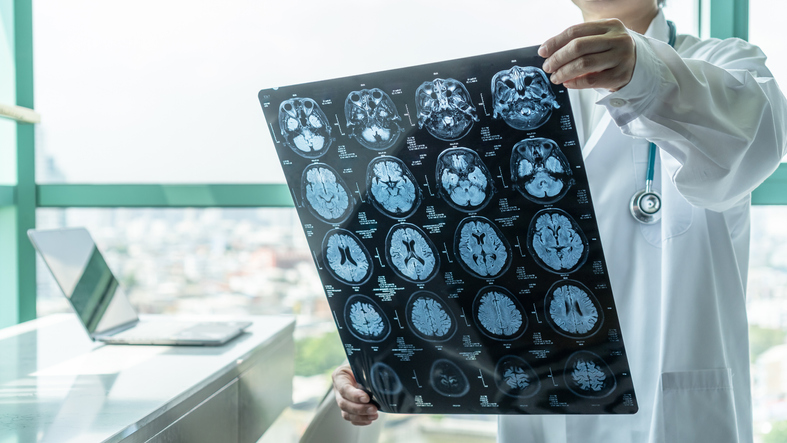Pain
Types of Chiari Malformation

Chiari malformation is a rare condition in which part of the lower skull is too small which forces the cerebellum to be pushed down into the spinal column. The cerebellum is the part of the brain that controls movement, muscle control, equilibrium and balance. Chiari malformation is categorized into four types:
Chiari malformation Type I
Type I is the most common type of Chiari malformation and is often found in children. In Type I, the lower part of the cerebellum (not the brain stem) extends into an opening at the base of the skull called the foramen magnum. Typically, only the spinal cord goes through this opening. Type I is the only type of primary Chiari malformation that can be acquired after birth.
Oftentimes, Type I Chiari malformation does not produce symptoms; in fact, many individuals who have the condition don't even know it. Due to lack of symptoms, many adolescents and adults are inadvertently diagnosed during an examination for another condition. Symptoms may develop later in life. If symptoms do present, they include, but are not limited to, the following:
- Sudden neck pain
- Dizziness, balance problems
- Sleep apnea
- Trouble swallowing, hoarse speech
- Numbness in the hands and/or feet, difficulty with fine motor skills
- Tinnitus (ringing in the ears)
- Weakness, slowed heart rhythm, abnormal breathing
- Spine curvature
Chiari malformation Type II
Type II is the classic form of Chiari malformation and found in children born with spina bifida. Spina bifida is a condition in which the spinal cord does not completely form and properly close before birth, resulting in damage to the spinal cord and nerves. Children born with Type II Chiari malformation also have hydrocephalus (cerebrospinal fluid in the brain or "water on the brain"). In Type II, the brain stem and cerebellum extend into an opening at the base of the skull called the foramen magnum.
Chiari malformation Type II may be diagnosed after birth; however, it is typically diagnosed via ultrasound during pregnancy. Symptoms typically appear in early childhood and are more severe than Type I. Symptoms of Type II may include the following:
- Arm weakness
- Swallowing issues (including gagging)
- Rapid downward eye movements
- Changes in breathing patterns
Chiari malformation Type III
Type III is the rarest and most serious type of Chiari malformation. It involves protrusion of the cerebellum and brain stem into the spinal cord through an opening in the back of the skull. This causes severe neurological defects resulting in the highest mortality rate of the four types. Typically, diagnosis is made at birth or via a pregnancy ultrasound.
Symptoms of Type III typically appear in infancy and may cause life-threatening complications. Chiari malformation Type III symptoms may include the following:
- Mental delays
- Physical delays
- Seizures
- Arm weakness
- Swallowing issues (including gagging)
- Rapid downward eye movements
- Changes in breathing patterns
Chiari malformation Type IV
Type IV is extremely rare and consists of an underdeveloped cerebellum. Oftentimes, it is associated with exposed parts of the skull and spinal cord. Although the cerebellum may be in the correct position, parts of it are missing.













